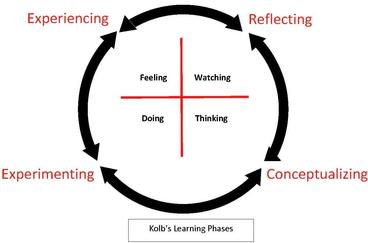
Scaffolding and Sequencing Writing Assignments
Effective writing assignments, aligned with core learning goals, can help students build on their prior knowledge, apply key concepts introduced in lectures, labs, readings, and discussions, and anticipate future learning. While it is important to make the why behind the assignment clear to students, it’s also important to consider the when of the assignment. This page offers some guidelines for scaffolding and sequencing writing assignments.
Scaffolding and sequencing are closely related terms. Scaffolding assignments entails breaking longer writing activities into shorter tasks. Sequencing assignments refers to the specific ordering of those writing tasks. Scaffolding and sequencing can be used to establish discrete stages within one longer assignment, and they can be used more broadly to organize an entire semester of writing.
Options for Scaffolding and Sequencing
While it may not always be feasible to scaffold and sequence writing assignments, here are four options for how one might do so:
1. Scaffold and sequence assignments to move from smaller, discrete tasks to more complex ones. For example, a literature review is a complex writing assignment—often assigned in capstone-level courses—that requires the integration of multiple skills, such as careful reading, annotating, summarizing, and synthesizing. To support student writers in their development of a literature review, an instructor might scaffold the project into shorter tasks focused on reading, summarizing, and synthesizing. These short tasks provide an opportunity for the instructor to offer formative feedback and identify potential problems or challenges. Those tasks might then be sequenced into writing assignments that begin with a summary of a source, followed by an annotated bibliography, before culminating in the literature review. As seen in this example, complex tasks can be scaffolded by:
- Writing short, single-task papers (e.g. a methods section of a scientific paper) before writing longer ones with multiple dimensions (e.g. a scientific paper that includes the IMRAD structure.)
- Summarizing a text before analyzing, interpreting, or criticizing a text.
- Summarizing multiple readings before comparing or synthesizing two or more readings.
- Explaining a basic concept before applying that concept to new problems or cases.
- Explaining one or more author’s argument or theory and evidence before putting these arguments and theories into discussion and/or before developing one’s own position on the issue.
2. Scaffold and sequence a key assignment into parts with which students might struggle that you can schedule as times for targeted writing instruction. For example, is there a research component? If so, schedule times for students to bring in critiques of their sources to discuss in groups. Are you asking them to analyze a problem? Schedule time to explain the methods of analysis in your field and have them apply it to their developing paper in a quick, informal writing assignment.
3. Scaffold and sequence assignments so they begin with concrete tasks before moving into reflective, abstract, and active ones. Drawing on David Kolb’s work (1985) with learning phases, John Bean (2011) offers a useful overview of the kinds of writing assignments that might align with ways of thinking, learning, and knowing about your course topic:
Concrete Experience Assignments: Learners are introduced to new concepts and issues through watching a film or demonstration, playing a game, doing field observations, and so forth.
These may include non- or minimally graded writing that provides practice with expected critical and/or innovative thinking or records the learner’s personal observations, thoughts, and feelings during the initial experiences; raises questions; and expresses puzzlement. Read more about informal writing assignments.
Reflective Observation Assignments: Learners reconsider concepts and issues after reading, listening to lectures, participating in class discussions, and hearing different points of view.
These may include exploratory writing, such as journal entries, that allow students to connect new material to their personal experiences and what they’ve learned previously; personal pieces based on autobiographical experiences with a topic, problem, or concept; personal reflections that encourage a questioning, open-ended, thinking-aloud-on-paper approach. Read more about informal, out-of-class writing and reflective writing.
Abstract Conceptualization Assignments: Learners try to achieve an abstract understanding of the concepts and issues by mastering and internalizing their components and seeing the relationship between new material and other concepts and issues.
These may include academic, argument-based, analytical, thesis-driven papers; concept maps; role-playing assignments.
Active Conceptualization Assignments: Learners actively use newly acquired concepts to solve problems by applying them to new situations.
These may include position papers based on cases that use new concepts; write-ups of students’ laboratory or field research using the concepts; proposals applying new concepts and knowledge to solve real-world problems; creative pieces demonstrating understanding of new material.
It’s important to note that these learning phases involving concrete, reflective, and abstract thinking are not meant to imply a hierarchy of value for each activity and the forms of writing associated with it. Rather, the sequencing of such tasks may be more productive for writers by moving from local to outward concerns.
4. Scaffold and sequence assignments to repeat and measure progress. There are very few skills that can be mastered in one writing assignment. Having learners write more than one case study, more than one technical memo, or more than one explication essay will allow them to develop increased control over the term.
Scaffolding and Sequencing across the Semester
The following writing assignments were developed for a course on medical anthropology. Here the instructor has scaffolded and sequenced the writing tasks, so that student writers will first define a key concept (structural violence), then analyze the key concept in a specific context, and then apply it to a course of action.
Writing Assignment 1 (Definition Essay): Paul Farmer introduces the idea of “structural violence,” a useful concept for thinking about the diagnosis of poor health and injustice around the world. Yet the term is not widely recognized or understood. In this paper, define and describe the concept of structural violence, and illustrate it with an example. Include a textual quote (of your choice) from Farmer’s essay that provides support for your definition and description.
Writing Assignment 2 (Op-Ed Essay): For the second essay cycle, imagine that you are invited to write a 3-page guest editorial for a newspaper or magazine of your choosing. Your Op-Ed must concern a contemporary issue involving health injustice and structural violence.
Writing Assignment 3 (An Action Alert): Write an action alert essay that does not exceed five typed pages. While your essay needs to be coherent, it does not have to “look” like a conventional essay; for example, you may organize your paper according to categories, ones that will help your readers to find the information they want when they reread your alert. As with your op-ed, your action alert should target a specific audience of readers; however, unlike the op-ed, you are now writing to an audience that is generally sympathetic to your views. Your purpose for writing is to inform readers of the issue and to offer a specific course of action you think will help begin to solve the problem.

